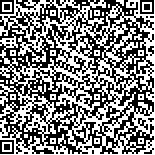| 马 欢,任志慧,杜 辉,等.食管癌根治术后急性呼吸衰竭危险因素分析及列线图预测模型构建[J].肿瘤学杂志,2024,30(6):492-497. |
| 食管癌根治术后急性呼吸衰竭危险因素分析及列线图预测模型构建 |
| Analysis of Risk Factors of Acute Respiratory Failure After Radical Resection for Esophageal Cancer and Construction of a Nomogram Prediction Model |
| 投稿时间:2024-03-07 |
| DOI:10.11735/j.issn.1671-170X.2024.06.B007 |
|
 |
| 中文关键词: 列线图 预测模型 食管肿瘤 根治术 急性呼吸衰竭 影响因素 |
| 英文关键词:nomogram prediction model esophageal neoplasms radical surgery acute respiratory failure influencing factor |
| 基金项目:张家口市科技攻关计划项目(1321064D) |
|
| 摘要点击次数: 433 |
| 全文下载次数: 183 |
| 中文摘要: |
| 摘 要:[目的] 探讨影响食管癌根治术后急性呼吸衰竭(acute respiratory failure,ARF)的危险因素并构建列线图(Nomogram)预测模型。[方法] 对2018年12月至2022年12月河北北方学院附属第一医院肿瘤放射治疗中心食管癌根治术后49例ARF患者和97例非ARF患者进行回顾性研究,收集并比较患者临床资料,分析影响食管癌根治术后ARF的因素。绘制差异有统计学意义因素的受试者工作特征(receiver operating characteristic,ROC)曲线,分析各因素预测食管癌根治术后ARF的曲线下面积(area under curve,AUC)和最佳截断值。采用Logistic回归模型分析食管癌根治术后ARF的独立危险因素。采用R语言软件4.0“rms”包构建预测食管癌根治术后ARF的Nomogram模型,分别采用校准曲线和决策曲线对Nomogram模型进行内部验证和对其预测效能进行评估。 [结果] 两组患者年龄、血清白蛋白水平、手术时长、吸烟史、肺部手术史、吻合口瘘、胸腔粘连比较差异有统计学意义(P<0.05)。年龄、血清白蛋白水平、手术时长的AUC分别为0.761、0.692、0.712,最佳截断值分别为54.00岁、38.15 g/L、3.08 h。年龄(>54岁)、血清白蛋白水平(<38.15 g/L)、手术时长(>3.08 h)、吸烟史(有)、肺部手术史(有)、吻合口瘘(有)、胸腔粘连(有)是影响食管癌根治术后ARF的独立危险因素。Nomogram模型预测影响食管癌根治术后ARF的C指数为0.725(95%CI:0.640~0.772),阈值>0.21。校准曲线显示观测值与预测值之间保持较好一致性。Nomogram模型提供临床净收益并高于各独立预测因子。[结论] Nomogram模型具有较好的预测效能和临床应用价值,可为食管癌根治术后ARF的预防提供一定的参考。 |
| 英文摘要: |
| Abstract: [Objective] To analyze the risk factors of acute respiratory failure(ARF) after radical resection for esophageal cancer and to develop a nomogram prediction model. [Methods] Clinical data of 146 patients who underwent radical resection for esophageal cancer in First Affiliated Hospital of Hebei North University from December 2018 to December 2022 were retrospectively analyzed, among whom ARF developed after surgery in 49 patients(ARF group) and ARF did not occur in 97 patients(non-ARF group). The risk factors of ARF after radical resection were analyzed by Logistic regression. The receiver operating characteristic(ROC) curves was used to evaluate the efficiency of each risk factor in predicting ARF after radical resection. R language software 4.0 “rms” package was used to construct a nomogram model for predicting ARF after radical resection. The calibration curve and decision curve were used to internally validate the nomogram model and evaluate its predictive performance. [Results] There were significant differences in age, serum albumin level, surgery duration, smoking history, lung surgery history, anastomotic fistula and pleural adhesion between the two groups(all P<0.05). The area under the ROC curve(AUC) of age, serum albumin level and surgery duration were 0.761, 0.692 and 0.712, respectively. Age(>54.00 years old), serum albumin level(<38.15 g/L), surgery duration(>3.08 h), smoking history(yes), lung surgery history(yes), anastomotic fistula(yes) and pleural adhesion(yes) were independent risk factors for ARF after radical resection for esophageal cancer. C-index of the nomogram model for predicting the occurrence of ARF after radical resection was 0.725(95%CI: 0.640~0.772), with a threshold >0.21. The calibration curve showed good consistency between observed values and predicted values. The nomogram model provided clinical net benefits that were higher than each independent predictive factor alone. [Conclusion] The nomogram model developed in this study has good predictive performance and clinical application value, which can provide a certain reference for the prevention of ARF after radical resection for esophageal cancer. |
|
在线阅读
查看全文 查看/发表评论 下载PDF阅读器 |